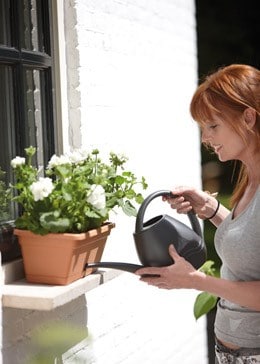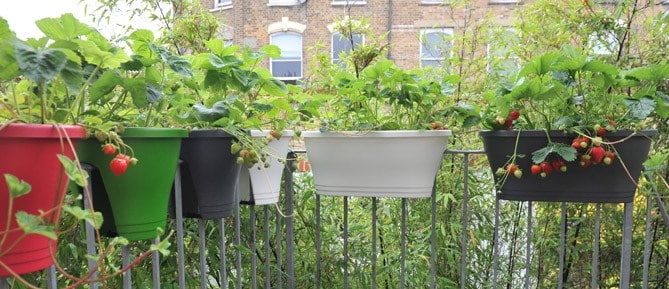Monthly musings: May
Be creative with windowboxes
For many town and city would-be gardeners, a windowbox is their first chance at getting their hands dirty. Windowboxes are a fantastic way of brightening up the outlook by adding colour and interest to dull facades. When filled to overflowing, with colourful flowers and foliage, they’re the perfect finishing touch. But windowboxes offer much more than this, because they can be used all around the garden – providing creative solutions to difficult areas. Take a passageway, for example, placing a windowbox here is ideal for adding a serious splash of colour without impeding access.
Where to use windowboxes
- Brightening-up windows
- Fresh herbs outside the kitchen window
- Decorating sheds and garages
- Filling passageways with colour
- Softening edges paving
- Along the tops of low walls
Choosing and using

Ideally, a windowbox should be at least 20cm wide and deep, so that it can accommodate sufficient compost. This will keep the plants happy and make watering easier. The length will depend on the space available. If your windows are unusual sizes, it maybe worthwhile constructing custom-made windowboxes. Even if you have deep sills that are wider than the windowbox, it is essential that the windowbox is secured in position to prevent accidents. Where the windowsill is too narrow, you can secure windowboxes on special brackets fixed to the wall just below the window.


Endless colour
By adding spring bulbs you can create a year-round scheme that provides an ever-changing display through the seasons, or combine plants that look their best at the same time for more impact. On the other hand, by planting up special plastic trough ‘liners’ that fit snugly inside a standard windowbox, you could plant one for each season and then swap them for a flowering succession. You can even create a mini-herb garden in a windowbox. Fixed outside the kitchen window, this can be convenient way of having your favourite herbs fresh and on hand.
To help camouflage a rather untidy shady spot, I’ve planted a windowbox liner with a combination of moisture-loving, shade-tolerant plants, including Pacific bleeding heart (Dicentra formosa), and Irish tatting fern (Athyrium filix-femina ‘Frizelliae’), framed by English ivy (Hedera helix).
Happy gardening!
